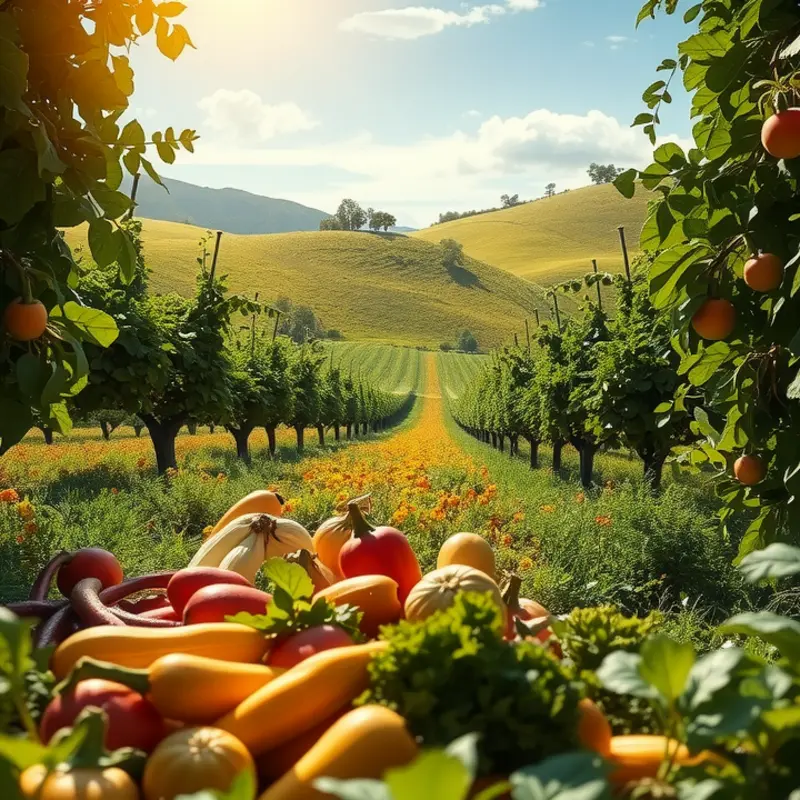Proper food storage is crucial for preserving freshness, reducing waste, and enhancing meal planning. With simple hacks and strategies, you can ensure your kitchen works efficiently while keeping food safe and delicious. Discover actionable tips to optimize your food storage methods, reduce spoilage, and streamline your food management practices.
Essential Food Storage Techniques

Understanding how to store food properly is crucial for minimizing waste and maintaining freshness. From managing temperature to selecting the right containers, let’s explore the pivotal techniques you need.
Temperature Controls
Temperature is a fundamental factor in food preservation. Each item has an optimal temperature range for storage. Perishables like dairy should be kept below 40°F in the refrigerator. On the other hand, frozen goods need consistent temperatures of 0°F or lower for long-term storage. Use a thermometer to regularly check these settings. For more advanced methods of storing sauces safely, you can explore safer storage of sauces.
Understanding Shelf Lives
Every food item has a limited shelf life, and knowing this can help in planning consumption. Leafy greens and berries have a short span, usually a few days. Meanwhile, root vegetables and intact grains can last for months. Cataloging these durations can optimize meal planning and prevent spoilage.
Optimal Containers
The type of container plays a significant role in how long food stays fresh. Airtight containers are indispensable for dry goods like flour and sugar, preventing moisture and pests. For liquids and semi-liquids, glass jars are ideal due to their non-reactive nature and ability to seal tightly. Using transparent containers allows for easy identification, reducing the need to open them frequently.
The Role of Humidity
Different foods require distinct humidity levels. Vegetables like lettuce thrive in higher humidity, around 90-95%, while fruits prefer a slightly drier environment. Many modern refrigerators come with adjustable drawers to help manage this. Utilize these settings to extend the life of your produce.
Vacuum Sealing
Vacuum sealing is a more involved technique, but it provides an excellent barrier against air and expands the shelf life of many foods. It’s particularly effective for meats and bulk preparation. By removing air, vacuum-sealing minimizes oxidation and freezer burn.
Proper Labeling
Labeling is often overlooked but essential in a busy kitchen. Use waterproof markers to note purchase dates and expiration dates on your products. This habit aids in organizing your storage systematically, allowing prioritized consumption to avoid wastage.
These foundational food storage techniques not only keep your food fresh for longer but also aid in planning meals more effectively, reducing unnecessary waste. By implementing these practices, you can manage your kitchen efficiently while being mindful of food safety.
Creative Ways to Minimize Food Waste

Reducing food waste doesn’t just benefit the environment; it also enhances your culinary creativity and saves you money. By thinking outside the box with how we manage scraps, leftovers, and expiration dates, we can make huge strides in minimizing waste at home.
Start by reimagining your kitchen scraps. Many vegetable peels, stalks, and roots that usually end up in the bin can serve a second purpose. For example, carrot tops and celery leaves can be used to create a vibrant pesto, perfect for dressing salads or mixing with pasta. Additionally, potato peels can be tossed in a bit of oil and seasoning, then baked until crispy for a nutritious snack.
Leftovers often end up forgotten at the back of the fridge, only to be tossed out later. Embrace a new routine of transforming these leftovers into ready-to-eat meals. That Sunday roast chicken can become Monday’s chicken salad or Tuesday’s chicken soup. Cooked rice can easily be turned into fried rice by adding some vegetables and eggs. This not only reduces waste but offers a quick way to prepare flavorful meals with little effort.
Understanding expiration dates can be critical in reducing food waste. Many consumers misconstrue ‘best by’ as ‘expired by.’ Typically, ‘best by’ refers to peak flavor or quality, not safety. Use your senses to assess whether food is still good—it can often be consumed safely past these dates, especially items like canned goods, pasta, and dry grains.
Extend the life of perishable items with some clever storage hacks. Storing herbs like cilantro and parsley in the fridge with their stems in a glass of water, loosely covered with a plastic bag, vastly prolongs their freshness. Maximizing the shelf life of your groceries can be complemented by exploring eco-smart storage solutions. Learn more about eco-smart kitchen storage for insights into optimizing your storage space.
Moreover, freezing offers a powerful way to preserve food. You can freeze a plethora of items including bread, citrus fruits, and even prepared meals. When freezing liquid items, leave room for expansion and use air-tight containers to avoid freezer burn. This way, you can enjoy soups, stocks, or batches of cooked beans long after they were initially prepared.
To further enhance your kitchen’s sustainability, consider integrating a composting system. Although this doesn’t directly minimize food use, it ensures that what you do waste nurtures new life. Organic materials return to the soil, enriching your garden and closing the food cycle loop.
Implement these creative strategies to make the most of your groceries. Not only will you save money, but you’ll also contribute to global efforts to reduce food waste, promoting a more sustainable and eco-friendly lifestyle.
Final words
Implementing effective food storage techniques not only prolongs the freshness of your groceries but also significantly reduces waste. By understanding how to store various foods and creatively repurposing leftovers, you create a more sustainable kitchen environment. Adopting these practices will help you save money and make meals more enjoyable and less stressful. Start applying these hacks today, and watch as your food management improves, reducing your carbon footprint while enhancing your cooking experience.







